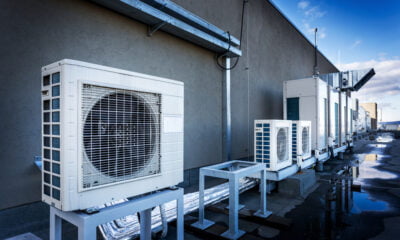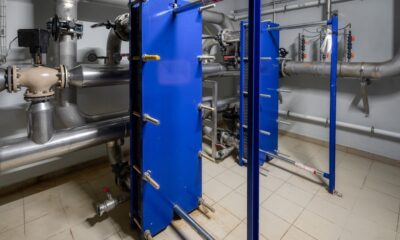

Energy
New Window Technologies Transforming Home Energy Efficiency
Sustainability begins at home, so it’s important to assess your home’s strengths and weaknesses when it comes to energy efficiency. And while some problems are easy to see – the old air conditioner that uses too much energy without cooling the home effectively, the drafty door that lets cool air out and hot air in – there are many other problems that loom invisibly. Old windows fall into this category.
Replacing old, energy inefficient windows can lower your home’s energy bill significantly, and today there are numerous options that can help insulate your home more effectively. If you’re ready to undertake this home improvement project, here are four window options that will keep your home cool and your energy use under control.
Doubling Down
One of the simplest home insulation technologies on the window market is the double-paned window. Precisely what they sound like, these windows have two layers of glass instead of just one and this feature reduces energy use, as well as protecting your home against ambient noise. This can be especially advantageous if you live in a noisy, urban area and can also eliminate the need for an additional white noise machine.
At The CORE
While most window insulation technologies focus on the panes, there is one standout option targeted to window frames. CORE technologies come in a few options, including the highly efficient ecoCore reinforcement and associated SmartCore. These products are used to insulate the frame of windows, a revolutionary choice at a time when most efficiency technologies target the glass. These technologies also increase the strength of your window, protecting your home from attempted intrusions.
EcoCore technology is especially efficient and appropriate for both homes and offices, a fact that UK businesses should consider in light of upcoming solar tax hikes. Much like offsetting energy bills with better window technologies, offsetting these tax hikes can provide significant financial benefits.
Fill It Up
Double-pane windows, as mentioned above, provide mild gains around energy efficiency, but there are easy ways to increase that value. The best way is to use gas in-fills such as argon and krypton to fill the space between the two panes of glass. These gases are non-toxic if they leak and may be more efficient in cases where the space between windowpanes is very narrow. Though these gases may be slightly more expensive, they have long-term stability as in-fill material.
A Low-E Approach
Have you ever tried to keep your house cool by covering your windows with sun-blocking stickers? If so, you’ve probably been experimenting with a version of low-E technology. Low-E (for low emissivity) glass is an innovative type of coated glass pioneered in the 1990s in a push for improved energy efficiency. Since then, the field has developed rapidly, and today many homes feature low-E glass. This is the very technology that makes predominantly glass structures, from houses to skyscrapers to the Apple Store, possible.
What makes low-E glass work is the fact that it’s covered in nanoparticles that keep out infrared light. In so doing, they allow visible light through without letting in all the heat. Those low-E windows certified by Energy Star can reduce your lifetime energy bills by nearly 25 percent.
Your windows are one of the places where your home is most vulnerable to energy loss, so it’s important to be proactive in making them more energy efficient. With so many options available, homeowners can really make smart decisions about how much to invest in insulating window technologies.


 Environment10 months ago
Environment10 months agoAre Polymer Banknotes: an Eco-Friendly Trend or a Groundswell?

 Environment11 months ago
Environment11 months agoEco-Friendly Home Improvements: Top 7 Upgrades for 2025

 Features9 months ago
Features9 months agoEco-Friendly Cryptocurrencies: Sustainable Investment Choices

 Features10 months ago
Features10 months agoEco-Friendly Crypto Traders Must Find the Right Exchange





























